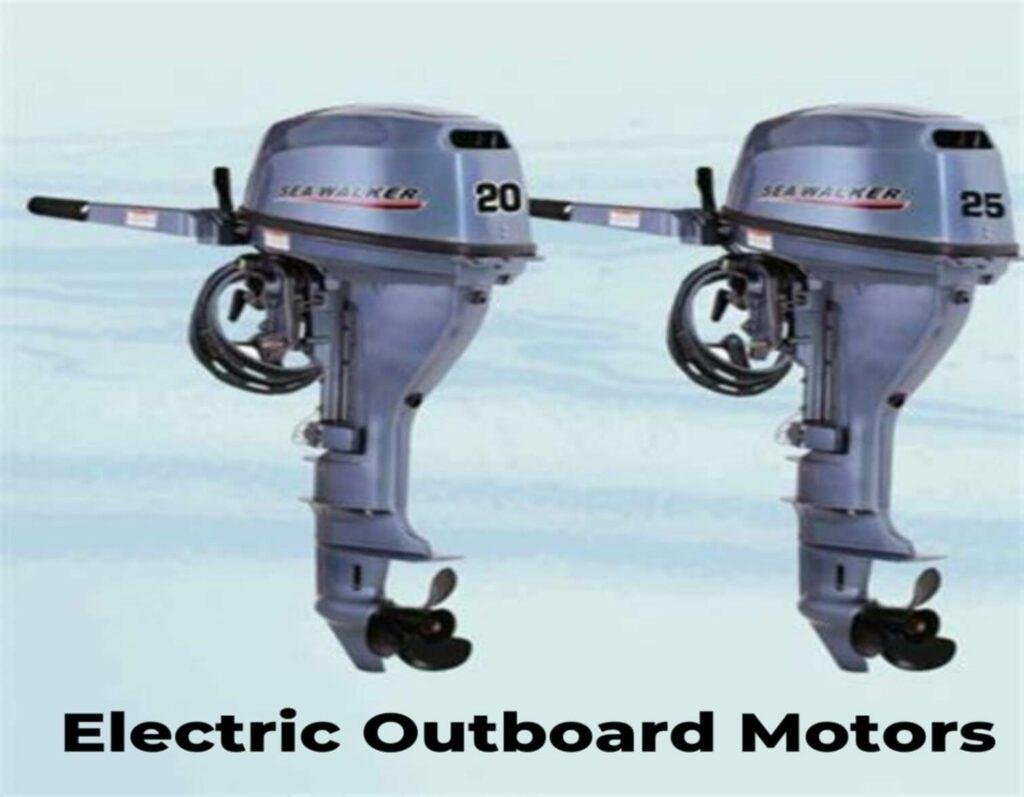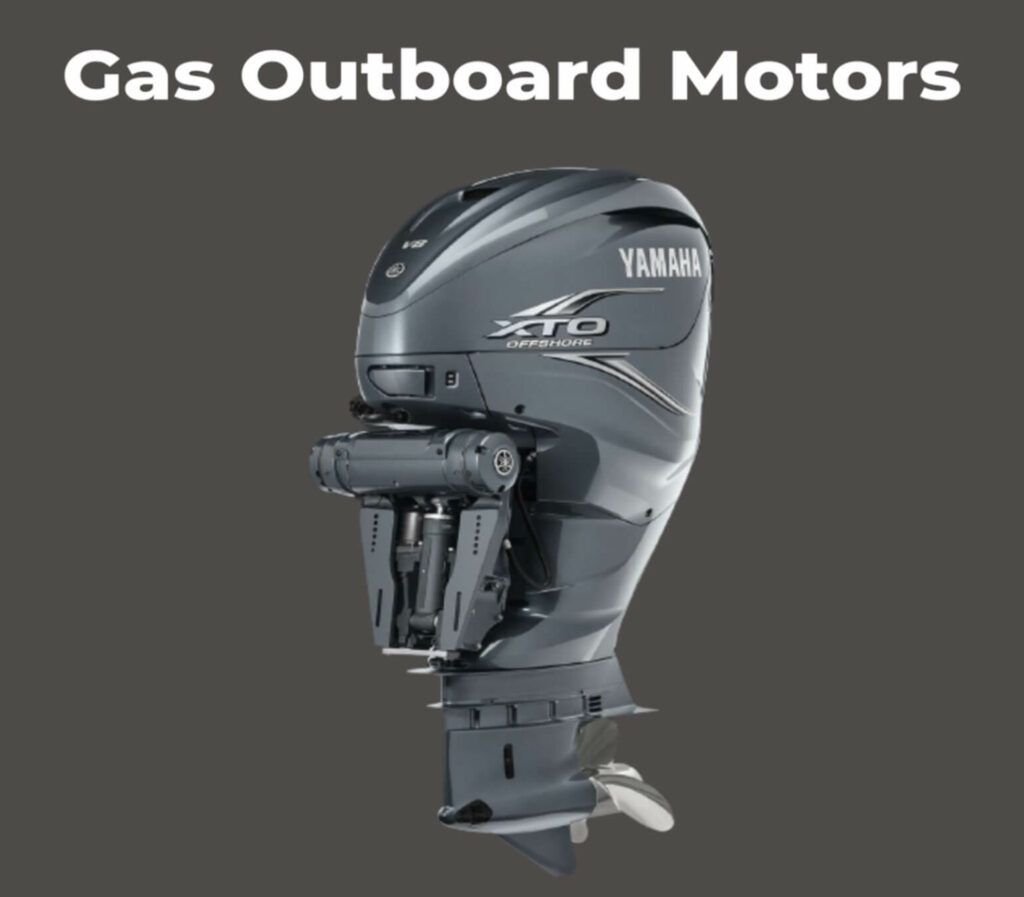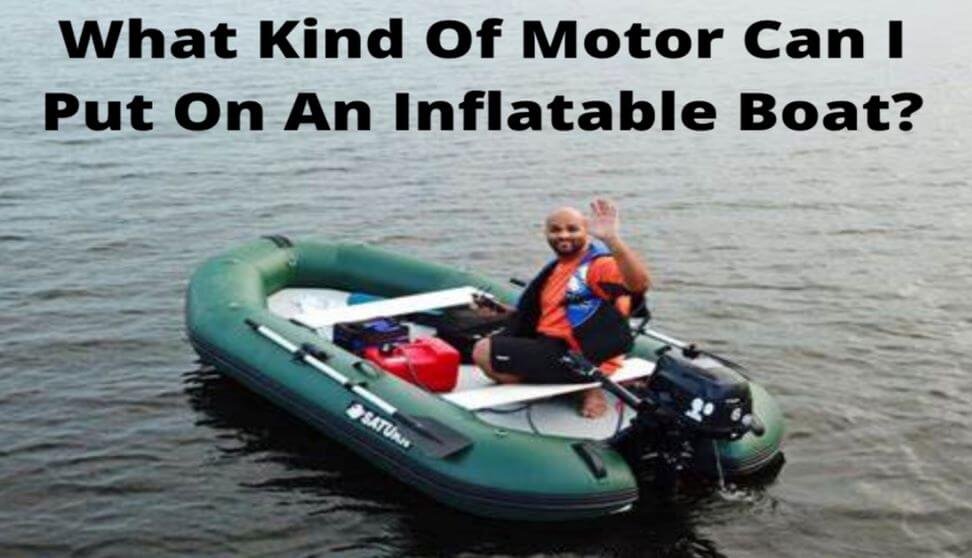You may significantly improve the performance of your inflatable boat by installing the appropriate outboard motor, which will also make the experience for you and your friends safer. Outboard motors are available in various sizes and power outputs to accommodate different inflatable boat designs.
It is critical for us, as the owner of an inflatable boat, to be informed about trolling motors, electric outboard motors, and gas outboard motors of all models. In this post I will help you decide which motor you need based on your application and requirements.
What Kind of Motor Can I Put on an Inflatable Boat?
1. Trolling Outboard Motors:
Trolling motors are a convenient alternative since they do not need tune-ups, oil, or gas. You’ll need a deep-cycle battery and a charger that uses very little electricity to power this motor. Lead-acid batteries range in price from $60 to $170+, based on the quality and amp hour ratings.

They have a few maintenances needed to guarantee that these motors endure for years. Overall, these motors are the most cost-effective way to motorize a vessel. You can use trolling motors in either freshwater or saltwater environments. The trolling motors come with shaft lengths ranging from 24 to 55 inches.
It is not appropriate to compare trolling motors since they are measured in thrust rather than horsepower. Trolling motors operate at a similar RPM, producing speeds ranging between 3.5 and 4.5 miles per hour. Trolling motors are an excellent option for fishing because they make very little noise.
These motors are not only lightweight but also simple to mount on a transom and remove when not in use. They are also a source of renewable energy that may be used for transportation and have the potential to be used as the primary engine over shorter distances. (Click Here to Learn More on Trolling Electric Motors)
The speed of trolling motors is one of its drawbacks. Customers who wish to fly or go faster than five mph should consider purchasing an electric or gas outboard engine. Another factor to consider is their limited range owing to battery power. These motors are inexpensive and excel at slower runabout speeds, making them perfect for fishing.
2. Electric Outboard Motors:
Electric outboard motors make use of a brushless direct drive technology, which is not only incredibly energy efficient but also very quiet and needs very little maintenance. Electric outboard motors offer far greater power and speed than trolling motors. Electric motors may attain rates ranging from 5.8 to 15 mph depending on the type and circumstances.

Electric outboard motors are a greener alternative to gas outboard engines. You can recharge the motor’s lithium batteries hundreds of times. Another advantage is that electricity is less costly than gasoline.
They are maintenance-free, so you don’t have to replenish oil regularly or repair components within the engine. Like trolling motors, electric motors should be rinsed with fresh water after each usage and kept in a dry location.
A few manufactures produce Electric outboard motors ranging in price from $2,399(+/-) to a few thousands of dollars. These motors come in different shaft and propeller sizes to serve a wide range of watercraft. We suggest utilizing a motor with a shaft length of 14-18 inches if you have an Inflatable Boat, which means you’ll need the electric shorter shaft.
The runtime of lithium batteries is one downside. Because gas has a higher energy density, it requires less fuel to move. Electric outboard motors will need bigger batteries to go greater distances.
3. Gas Outboard Motors:
One of the primary benefits of using a gas outboard motor is the ability to go significantly quicker and farther in a shorter amount of time. We advise using a motor with between 2.5 and 20 horsepower when utilizing one of the Inflatable boats. The maximum speed these motors can achieve depends on the horsepower, the kind of boat, the weight, the conditions of the water, and the wind.

Gas Outboard motors can withstand a more significant amount of wind, chop, and current. Compared to trolling and electric outboard motors, gas outboard motors can go longer on a single tank of gasoline and will need less weight in fuel.
Most outboard motors installed on inflatable boats have pull cords that help to start the motor manually. To run an electric motor, you will need a battery as well as a charger for that battery.
A wide range of shaft lengths is available for outboard gas motors to fit various transom heights. For all variants of the Inflatable Boat, you will need a shorter shaft.
Remember to examine the maximum engine weight your boat can support to extend the life of your transom. Please get in touch with the company that manufactured your boat if you need assistance determining the appropriate shaft length for your outboard motor.
Using gas and oil might be harmful since it requires more fuel. You must also perform maintenance on a consistent and regular basis on gas outboards. Using gas motors on freshwater ponds and lakes is prohibited , another one of the gasoline engine drawbacks.
In this particular circumstance, it would be beneficial for you to consider purchasing either a trolling motor or an electric outboard motor. There is a wide range of weights for outboard motors suitable for inflatable boats, from light to heavier.
Additional Resources
If you are looking for more tutorials, walkthroughs and troubleshooting about camping and enjoying the outdoors, here are some additional posts to check out:
So, Which Motor Is Best To Put On An Inflatable Boat?
If you want an inflatable boat for fishing and sluggish riding, I recommend an electric motor. Electric motors are lighter, environmentally friendly, and less expensive than fuel engines. Keep in mind the necessary minimum allowable power.
I highly recommend a gasoline motor if you want to use your inflatable boat for fast riding and planning. In automobiles, speed and power are directly linked; the more significant the torque, the greater the speed. This rule does not apply to inflatable boats.
Why? Because an automobile travels on a hard surface while an inflatable boat glides over the surface of the water. The greater the speed of a boat, the more the resistance created by the water. As a result, a strong engine does not guarantee a speed advantage.
Thanks for reading this article, if you think I forgot something or if you simply want to share a story or an experience, feel free to leave a comment below, Be Safe and Happy Boating.!


I’m glad that you informed us how electric outboard motors are a more environmentally-friendly alternative to gas outboard engines since you can simply recharge the motor with lithium batteries and won’t have to worry about replenishing oil regularly. I recently purchased a secondhand boat to use for our family fishing trips from now on, and I’m thinking of getting it a new outboard motor. I might just consider an electric one once I find one when I shop for outboard motors this weekend.
Thanks, Anna, for your comment, I am sure happy to see that more and more people are getting involve with electric motors. I just love the quietness compared to a gas motor and the cleanliness it brings to the habitat, and you are right, no gas spilling in the waters, no oil, etc, and now days, they make some powerful ones. Thanks for sharing and happy shopping.!